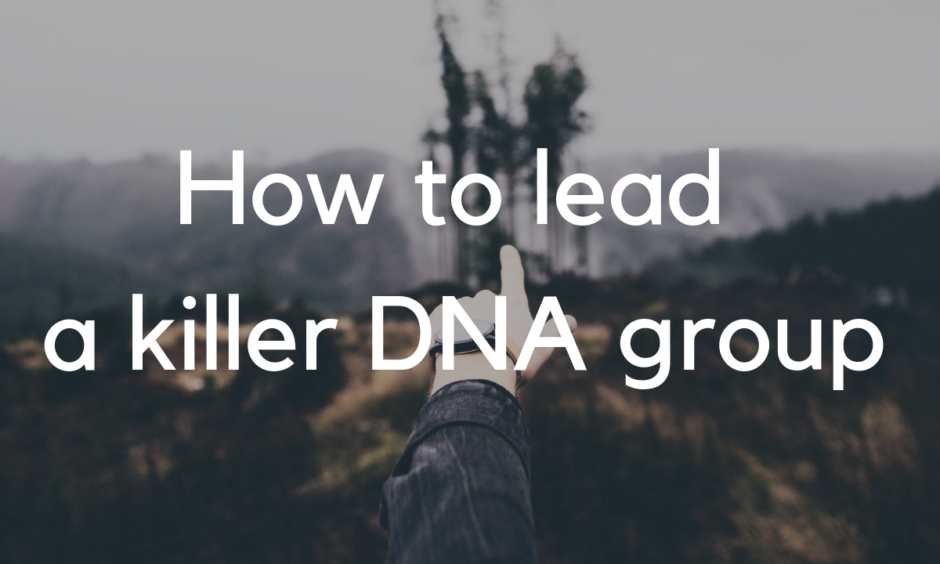This post is the fourth in a series on DNA groups. You can see the previous posts via the links below:
- Post 1 – Threshingfloor’s Four Spaces
- Post 2 – What a DNA group is and does
- Post 3 – The DNA group process
We’ve already covered why DNA groups are so crucial (long story short, Jesus both demonstrates and says that intimate, relational discipleship is crucial to our faith walk), what DNA groups are and do, and given an overview of the DNA group process. In this post we’ll look at five things you should be doing to lead a killer DNA group that helps people discover more about themselves and God, nurtures their faith, and act in light of the truth they’re learning.
Five things you must do
Balance invitation and challenge
Originally developed by 3DM, the invitation and challenge matrix is one of the most helpful grids I’ve found for thinking about how to lead and disciple people, and it’s incredibly applicable in a DNA group.
Time and time again in the Gospels, we see Jesus functioning as a classic horse-whisperer, inviting his followers into an intimate relationship with him while also initiating a direct challenge to behaviors he knew were either wrong or unhealthy. He drew his disciples closer, loved them, but also gave them the opportunity to accept the responsibilities of discipleship. “If anyone would come after me, he must deny himself and take up his cross and follow me. For whoever wants to save his life will lose it, but whoever loses his life for me will find it.” —Matthew 16:24–25Invitation is about being invited into a relationship where you have access to a person’s life and all the vibrancy, safety, love and encouragement that reside there. To learn from the places you clearly see Jesus at work in people’s lives, which you can see only by having access to them. But by accepting that invitation, you also accept the challenge that comes with it: The challenge to live into your identity as a son or daughter of the King.
Jesus created a highly supportive but highly challenging culture. Jesus created a highly inviting but highly challenging culture for his disciples to function and grow within. If we are going to build a culture of discipleship, we will have to learn to balance invitation and challenge appropriately. Jesus horse-whispered to his disciples all the time, leading them around what we call the “Leadership Square” (see Chapter 8). Fundamentally, effective leadership is based upon an invitation to relationship and a challenge to change. A gifted discipler is someone who invites people into a covenantal relationship with him or her, but challenges that person to live into his or her true identity in very direct yet graceful ways. Without both dynamics working together, you will not see people grow into the people God has created them to be.
Mike Breen, Building a Discipling Culture
If you want a killer DNA group, practice balancing invitation and challenge. Your group should be a place where people feel incredible welcomed and valued, but can expect loving challenge that will support them in growing.
Start with invitation by sharing your story and being fully honest about your failures, weaknesses, and strengths. Bring challenge by expecting the same kind of honesty from others as they share their stories. Practice invitation by taking the initiative to get together with your DNA group outside of a normal meeting; practice challenge by having others in your group plan a get together.
As you calibrate invitation and challenge within your group, you’ll lead people into being empowered as disciples and disciple-makers.
Saturate the group with prayer
Setting aside specific time in your week to pray for each person in your DNA group is one of the most powerful and practical things you can do to move your DNA group towards transformational effectiveness. In the six DNA groups I’ve led I’ve seen a marked difference during the times where I’ve invested time in prayer versus the ones where I haven’t prayed as deeply or intentionally.
And don’t just pray outside of your time together – make space in your DNA gathering times to pray together. Encourage people who are new or non believers to practice praying. Pray for each other right then and there when someone shares a challenge they’re facing. Pray for those you know that don’t follow Jesus yet together.
R.A. Torrey, How To Pray
“God has appointed a way by which we shall seek and obtain mercy and grace. That way is prayer; bold, confident, outspoken approach to the throne of grace, the most holy place of God’s presence, where our sympathizing High Priest, Jesus Christ, has entered in our behalf.”
Have a plan and be willing to toss it
One of the beautiful things about the DNA group process is how simple it is. After three or four meetings you’ll (most likely) have it memorized. But don’t let that memorization mean you don’t take time to prayerfully plan before meeting.
My personal process is to sit down for 10-20 minutes the day before my DNA group meets, read the scripture and it’s context a couple times, pray for my DNA group members, and write out an outline for our meeting. Then shortly before I leave for DNA I skim back over the outline, asking the Holy Spirit if there’s anything that He wants changed.
Make a plan for your time together. Don’t make a practice of coming unprepared. At the same time, hold that plan loosely. Tune in to the Holy Spirit’s leading and be willing to shift directions, scrap your plan, and do something different. If the discussion is going down an important path that’s different than what you intended, let it go.
Embrace the process
Odds are it will take several meetings for your DNA group to build familiarity with each other and with the process. If you have a group that didn’t previously know each other or aren’t followers of Jesus, things may be a bit awkward in the first couple gatherings. Don’t worry about it. Embrace the process and keep going. After a few meetings people will find their rhythms.
Also, embrace the process of calling people into follow-through on their action plans. Your group may struggle with this at first since most people aren’t used to making commitments and keeping them, but as they discover the joy of acting in obedience they will see significant growth. Make a practice of pushing people toward practical action plans each meeting and then following up the next meeting and having them share whether or not they did what they’d committed to.
Cast the vision (All the time)
Every DNA group is always moving towards multiplication. Those who are participating in a DNA group are moving towards leading one of their own. It’s crucial to keep that vision in front of the group all the time by explicitly stating it every time you gather.
Share stories of the impact of multiplication and the joy of leading a DNA group. Remind your group to be thinking of who they know that they could welcome into their own DNA group when the time comes.
It’s worth the work
Killer DNA groups are not complex, but they aren’t always easy to cultivate. But as you faithfully follow God’s lead, engage God’s word, and learn together God will do amazing things in your midst. You’ll truly see disciples made and people grow closer to who God created them to become. It’s well worth the work.
Do you have stories of the impact of your DNA group? Share them with us. We’d love to hear about what God is doing in and through you!





No Comments